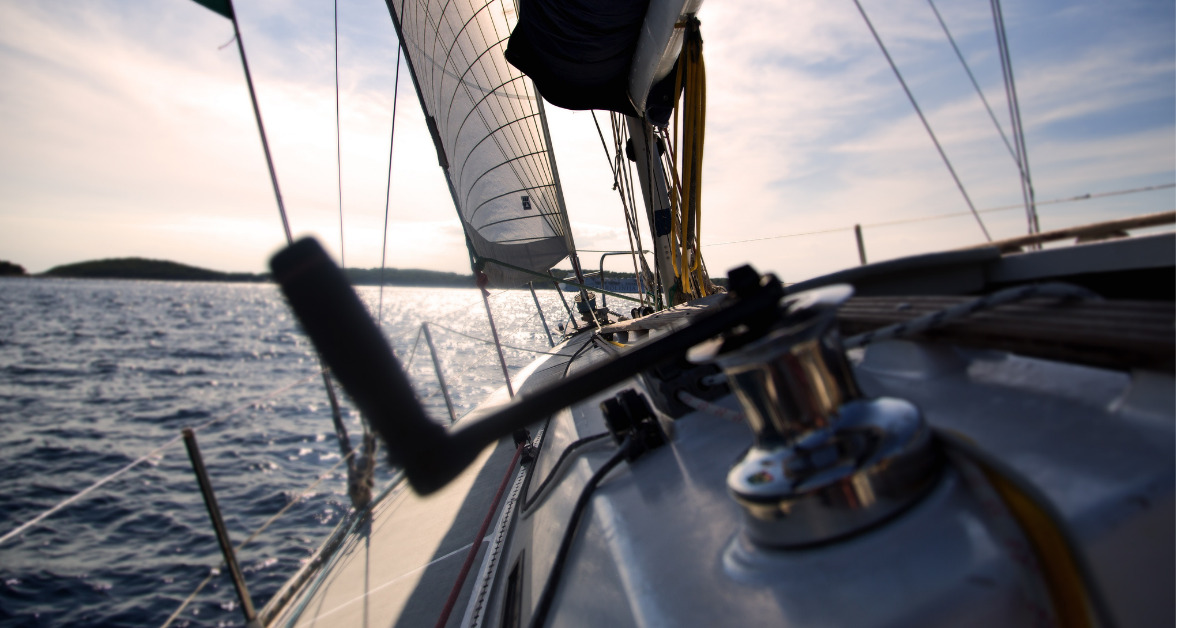Learning to drive a boat is not an easy task to conquer. Besides understanding the technicalities, you also have to know the boating etiquette and how to respond in certain situations.
Understanding and following the navigation rules is the first thing to do to avoid colliding with another boat. When on the sea, you need to stay vigilant about the upcoming vessels and pay attention to the navigational aids. You should bring someone to take turns during the “lookout.” Avoid traveling in shipping lanes and always stay visible to others by keeping your lights ON and using appropriate communication equipment.

Rules you should follow to Avoid Colliding with another Boat
Always be on a Lookout
While on the boat, always look out for other vessels, navigation aids, and upcoming hazards. It could be you, or you can appoint anyone to maintain a watch with binoculars at hand. This is extremely important in events of reduced visibility such as fog or at night.
Strictly follow the Marine Navigation Rules
There are specific navigation rules for sailors or drivers while sailing in the sea. This includes recognizing navigation aids, understanding visible, audible, and electronic signals, and basic navigation rules for specific vessels. Please continue reading; we have covered the marine navigation rules in detail.
Shipping Lanes are off the Chart
Stay away from shipping lanes at any cost. Shipping lanes refer to routes used by large vessels to transfer cargo to and from ports. In the charts, you can see these areas marked with magenta swaths
It covers approximately five miles wide with up-stream and down-stream traffic lanes. Since large ships travel at high speeds, it would take at least an hour for a sailboat to cover those five miles. Therefore, you need to maintain a ninety-degree angle to cross them within the shortest time possible. It goes without saying, never stop, anchor or heave at shipping lanes for fishing or other reasons.
Factor the Speed
A sailing boat travels 30 knots on average. So, while your boat is not within the shipping lanes, a cargo vessel can still move from the horizon to your location within 15 minutes. Always make sure not to outrun any crossing vessel. When in doubt whether you can cross before they reach you, it’s polite to take a slight turn and go behind them.
Stay Visible
Some crafts are hard to notice from the deck or during fog or night. Keep your boat lights always ON and use proper light schemes while anchoring. Use a radar reflector so that another vessel can pick up your return. It’s even better if you add AIS to your own radar.
Navigation Rules for Boats
The navigation rules for boats are similar to the driving rules on the road. When followed correctly, one can easily avoid colliding with other boats. Before we move further, here are a few basic terms you need to remember:
Vessel: It is a term used for boats and other (Personal Watercraft) PWC used for transportation such as motor, sailboats, paddleboards, etc.
Starboard Side: It is referred to as the right side of the boat, where you can look towards the bow (front part of the boat).
PortSide: It is the left side of the boat where you can look towards the bow.
Stern: it is the rear part of the boat.
Stand-on Vessel: The vessel that maintains course and speed. For instance, if your boat is approaching another boat through its starboard side, then your boat is a stand-on vessel. In such events, you need to maintain your course and speed.
Give-way Vessel: The vessel that takes necessary maneuvering action to avoid colliding with the stand-on vessel. For instance, if your boat is approaching another boat via its port side, you are the give-way vessel. Since the other boat is a stand-on vessel, you need to take action to avoid them.
When can you overtake another boat?
You can only overtake another boat if you are the give-way vessel. You need to take early actions to avoid the stand-on vessel and overtake them from either side. While overtaking a boat from its starboard side, you need to give one short sound signal to the other vessel. If you are overtaking from the port side, you need to display two short sound signals in such a case. The other vessel should return the sound signal, ensuring they notice your signal.
Handling Different Types of Vessel Encounters
Power-driven Vessel Encounter
If both the vessel are motorized boats, you need to apply the abovementioned rules of crossing and overtaking, which means that drivers should allow the boat from the starboard side to maneuver.
Sailboat and Power-driven Vessel
Whenever a sailboat encounters a power-driven vessel, the sailboat will always be the stand-on vessel. However, if the sailboat is overtaking another vessel, it could be the give-away vessel. There are exceptions when a sailboat is moving through a narrow channel. The sailboat can be considered a give-way vessel in such events since a motorboat cannot move around freely in a narrow channel.
Two Sailboat Encounter
The direction of the wind plays a significant role in deciding which boat should be the give-way vessel.
The sailboat with wind on its port side should be considered a give-way vessel. Similarly, the vessel with the wind on its starboard side will be the stand-on vessel.
If both boats have winds on the same side, the give-way boat will be the boat closest to the current or upwind. Similarly, the boat further away from the wind will be the stand-on boat.
Note: Less maneuverable vessels have the upper hand over motorboats. This includes vessels like sailboats, kayaks, canoes, commercial fishing boats, towing or rowing boats, broken boats, etc.
Communicating Through Sound Signals
Effective communication is essential to avoid collisions. Therefore, you must have a quality and efficient sound signaling device.
Rules for Sound Signals
Short Blasts:
Use one short blast for one second if you want to pass on the port side. Similarly, use two short bursts to pass through the starboard side.
Use three short blasts to inform you that your engine is in reverse.
Use five short blasts if you feel yourself in danger, such as not knowing the intention behind the approaching boat.
Prolonged Blasts:
If you notice a power-driven vessel operating in low visibility, use a single prolonged blast every two minutes.
Use a single prolonged blast for 4-6 minutes when you are approaching or exiting a blind turn/dock/berth or entering an obstructed area.
Use a single prolonged blast + two short blasts every two minutes for a sailing vessel operating in low visibility.
Use Aids to Navigation (ATON)
ATONs are accessories and equipment that help vessels to navigate safely in harsh weather and avoid a collision. It includes visible, audible, and electronic signals such as buoys, lights, beacons, fog signals, lightships, etc.
Using Buoys
The buoys are white with a shape of an orange. Buoys come with regulatory marks warning vessels about danger and restrictions.
Buoys with circles signify an upcoming restriction.
Buoys with an open diamond mean danger, while a diamond with a cross represents “Do Not Enter.”
Similarly, you can use square or rectangle buoys to send instructions.
While on the sea, always look out for any possible ATONs from any boat approaching you.
Tips for Launching and Docking a Boat
Launching or docking a boat can be dangerous as there would be several people trying to do the same time. To remain safe, it’s better to respect others’ time and work in coordination. Try to maintain a lower speed and avoid causing a wake.
Docking in harsh conditions can be tricky and require your completer alertness. Check the moving pattern of the wind and winds, and act quickly when you get the turn to dock.



